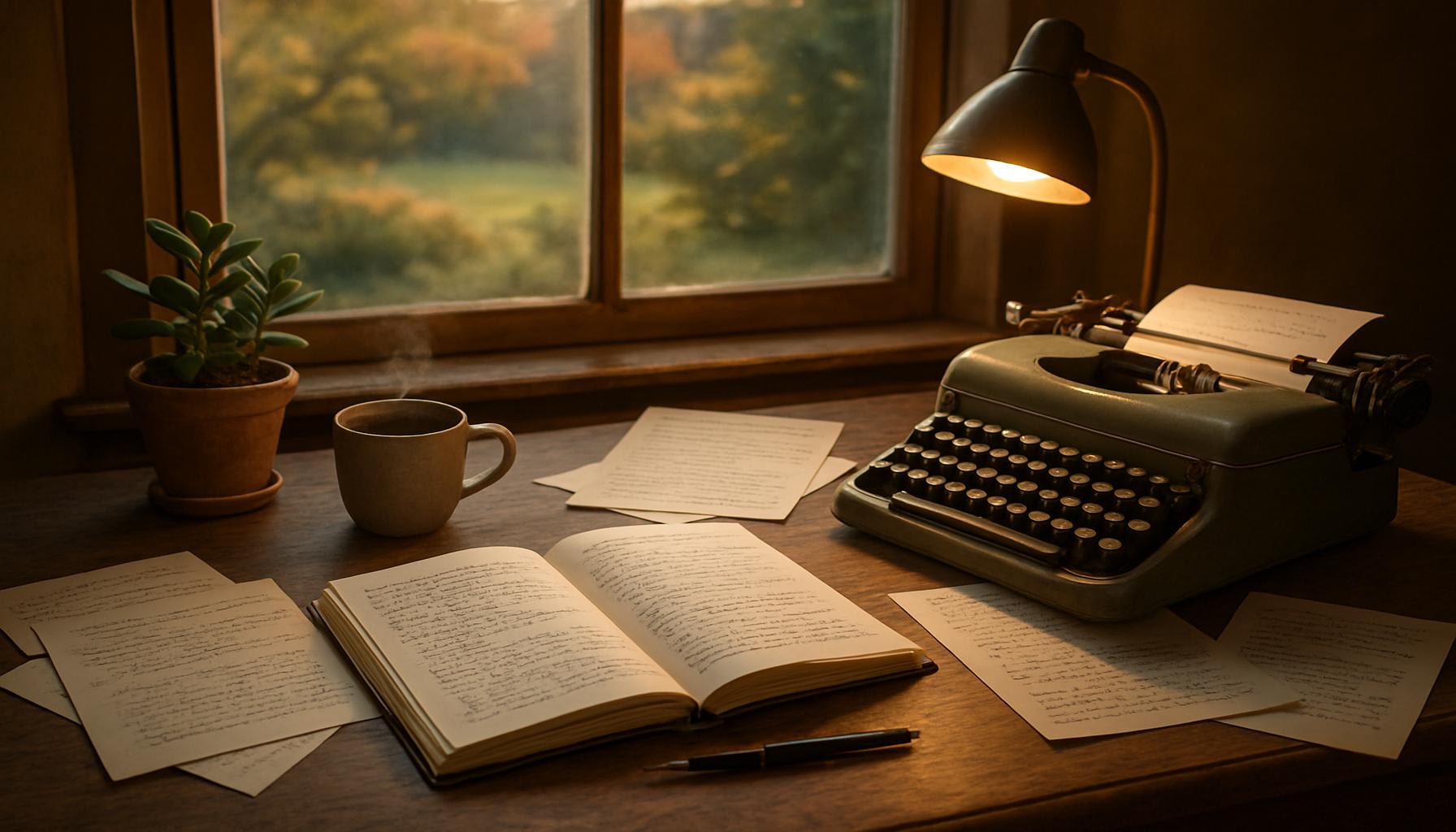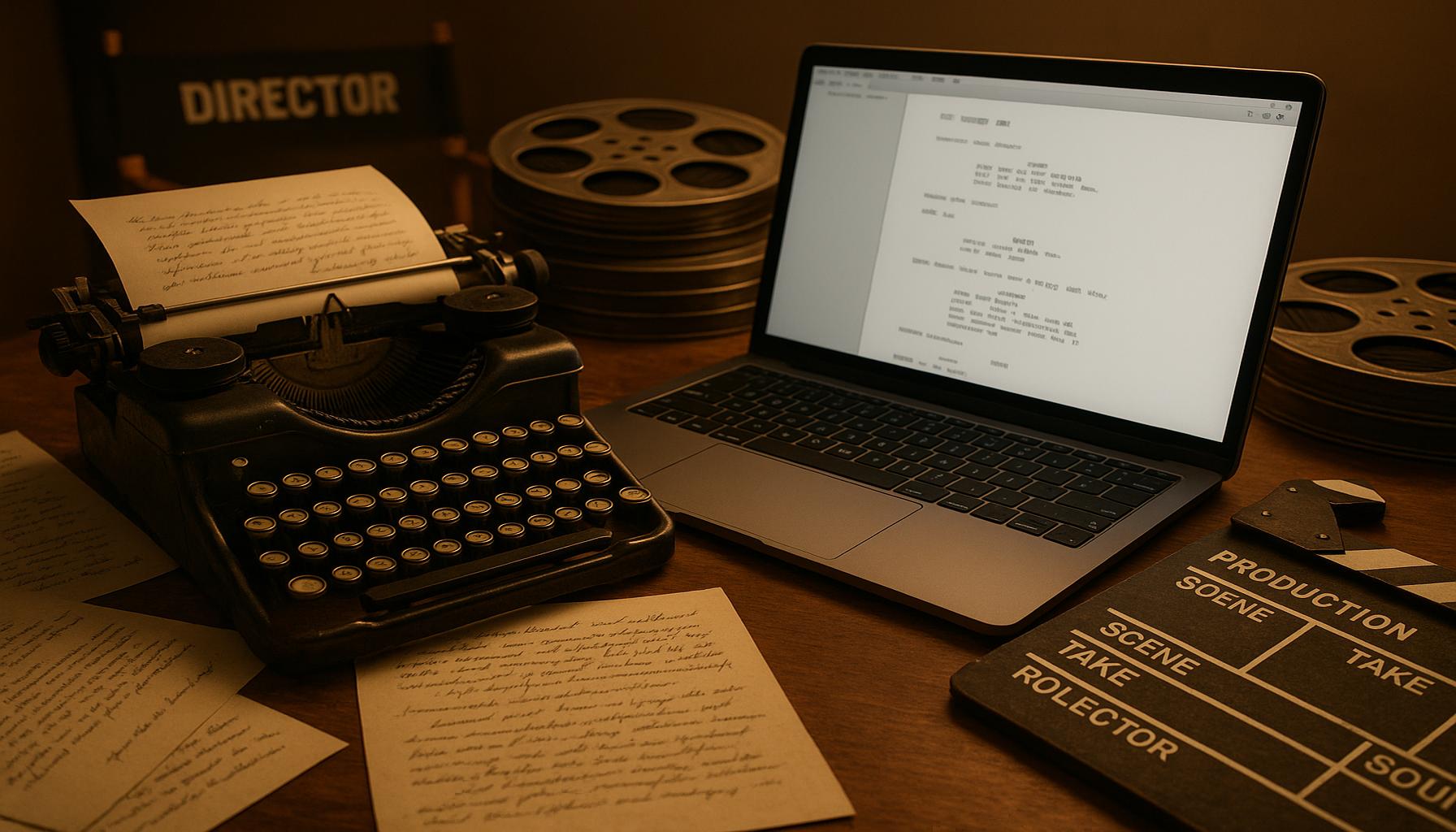Exploring Creative Writing: How to Transform Ideas into Compelling Stories

The Creative Journey of Writing
Every great story begins with a single idea, a spark that ignites the imagination. The key to transforming that initial concept into a compelling narrative lies in a structured approach that includes creativity, planning, and persistence. This journey from inspiration to creation involves techniques and strategies that can elevate your writing to new heights, leading to works that resonate deeply with readers.
Whether you identify as a seasoned writer honing your craft or a novice seeking to explore your voice, harnessing your creativity is essential. Here are some key elements to explore in this quest:
- Character Development: Creating relatable characters is crucial for drawing readers into your world. Characters should be multidimensional, having strengths and weaknesses, desires and fears. For example, consider a character like Katniss Everdeen from “The Hunger Games.” Her complexities—fierce yet vulnerable—allow readers to connect emotionally with her struggles against an oppressive regime.
- World-Building: Crafting immersive settings enhances the depth of your story. A well-developed world doesn’t just serve as a backdrop; it influences the characters’ choices and the overall narrative. The intricate worlds of J.R.R. Tolkien’s Middle-earth or the futuristic landscapes of Philip K. Dick’s novels showcase how environment shapes the story and characters. As you create your own setting, think about the rules of your world, its history, and how these elements affect your plot and characters.
- Plot Structure: Understanding story arcs helps maintain tension and interest. A classic structure, such as Freytag’s Pyramid, includes exposition, rising action, climax, falling action, and resolution. This framework ensures your story has the elements necessary to engage readers and lead them on an emotional journey. Popular films like “The Lion King” or novels like “To Kill a Mockingbird” utilize these principles effectively, keeping audiences enthralled from beginning to end.
Moreover, effective writing prompts can serve as a catalyst for fresh ideas. These prompts encourage you to think outside the box and explore new themes, characters, and conflicts. Workshops, online courses, and writing exercises are excellent resources to fuel your creativity. Websites like NaNoWriMo (National Novel Writing Month) and Writers’ Digest offer prompts and community support that can help you navigate your creative journey.
Embrace experimentation, as not every story will take flight on the first try. Allow yourself the freedom to write poorly before striving for excellence. Revising and rewriting are crucial stages that help refine your narrative and deepen your characters. Remember, even the most revered authors had to go through multiple drafts before their work saw the light of day.
By mastering these techniques, you can transform ordinary ideas into the extraordinary. Readers crave stories that resonate, inspire, and entertain. Whether you’re drafting a heartwarming romance or crafting a thrilling science fiction tale, the foundation of compelling storytelling lies in these elements. Are you ready to embark on this creative adventure and unveil your unique voice?
DIVE DEEPER: Click here to discover how music can boost your creativity
Unleashing Your Imagination: Tools and Techniques
Transforming ideas into compelling stories is a creative process that thrives on both inspiration and technique. As writers, we must cultivate an environment where our imagination can flourish. This involves not only understanding the fundamentals of storytelling but also utilizing tools that can inspire and boost our creativity. Below are several essential techniques to help you unlock your narrative potential:
- Free Writing: This practice encourages you to write continuously for a set period, without regard to spelling, grammar, or topic. The goal is to bypass your internal editor and let your thoughts flow freely. Free writing can illuminate unexpected ideas and themes that can later be refined into structured narratives.
- Mind Mapping: Use visual diagrams to organize your thoughts. Start with a central idea and branch out to related concepts, characters, and plot points. This technique allows you to see the connections between different elements of your story and may lead you to new and exciting paths for your narrative.
- Story Cubes or Prompts: Utilizing story cubes—dice featuring various images—or specific writing prompts can be a fun way to challenge your creativity. They can help you think differently about your story or introduce characters and conflicts you may not have considered. Many writers find that prompts available on websites such as Writers’ Digest provide valuable starting points that spark their imagination.
As you explore each technique, remember that every writer’s process is unique. While some may find success in structured methods, others thrive in spontaneity. The key is to experiment with these approaches and discover what resonates with you.
Additionally, reading diverse genres can be instrumental in developing your creative voice. Analyze how different authors convey emotions, construct dialogues, and build tension. As you read widely, take notes on what captivates you and consider how these techniques can be translated into your own writing.
Another productive avenue for enhancing your storytelling is participating in writing workshops or joining local writing groups. Engaging with other writers provides invaluable feedback, encouragement, and fresh perspectives. Many communities host workshops that cater to varying skill levels, such as the Poets & Writers directory, which can help you find opportunities to collaborate and learn from others.
Finally, don’t underestimate the power of discipline in your creative journey. Setting aside specific time blocks for writing can help establish a routine that fosters creativity. Writing regularly encourages your brain to process ideas continually, leading to deeper exploration of your themes and characters. Whether it’s 30 minutes a day or a couple of hours each weekend, consistency can significantly enhance the quality of your output.
By employing these tools and techniques, you can harness your imagination and transform fleeting ideas into powerful, compelling narratives. As you manifest your creativity, remember that every story, no matter how complex, begins from a simple idea waiting to be explored.
Exploring Creative Writing: How to Transform Ideas into Compelling Stories
As we delve deeper into the art of creative writing, it’s essential to consider the various techniques and strategies that can help authors transform their raw ideas into engaging narratives. Understanding the elements that captivate readers is crucial. Here, we explore the power of character development and the fundamental role of setting in enhancing storytelling.
The Importance of Character Development
Characters are the heart and soul of any story. They should be multidimensional, embodying unique traits that resonate with readers. To breathe life into your characters, it’s vital to create detailed backstories, motivations, and conflicts that drive their actions. Strong character arcs can evoke empathy, making audiences deeply invest in their journeys. By using methods like journaling from a character’s perspective or creating character “interviews,” writers can discover layers and nuances that can express themes and emotions on different levels.
The Role of Setting
Equally important is the setting, which acts as a backdrop for the unfolding drama. A well-crafted setting not only provides context but can also significantly influence a character’s development. Utilizing sensory details can help paint vivid images in readers’ minds, enabling them to immerse themselves in the narrative. Whether it’s the bustling streets of a city or the tranquility of a forest, the environment can mirror the internal struggles of characters or symbolize broader themes. To seamlessly integrate setting into your writing, consider employing techniques such as creating a mood board to visualize the world you are building or exploring real locations to capture authentic details. This groundwork allows writers to shape a story world that feels tangible and relatable.
| Character Development | Key Features of Engaging Characters |
|---|---|
| Multidimensionality | Characters must possess strengths, weaknesses, and conflicting desires. |
| Empathy | Readers should identify with characters’ emotional journeys. |
The intricacy of character development and setting in creative writing not only heightens the storytelling experience but also invites readers to engage with the narrative on a deeper level. By mastering these elements, writers can effectively transform ideas into powerful stories that linger in the minds of their audience long after the last page is turned.
DIVE DEEPER: Click here to discover eco-friendly crafting ideas
Crafting Characters and Building Worlds
Once you’ve tapped into your creative reservoir, the next step in transforming ideas into compelling stories involves crafting compelling characters and building immersive worlds. These elements are crucial for engaging your readers and making your ideas resonate on a deeper level.
Character development is more than just name and backstory; it’s about creating multifaceted individuals that undergo change. Consider employing the three-dimensional character approach, which requires you to look at your character from three perspectives: their desires, fears, and flaws. For instance, a character who yearns for love may struggle with commitment due to past traumas. This complexity not only makes them relatable but also keeps readers invested in their journey. Remember to provide your characters with distinct voices and motivations that align with your storyline. Resources like The Character Compass can assist in defining your characters’ traits more thoroughly.
Another impactful approach is understanding the character arc. A well-crafted character arc transforms them throughout the story—whether through growth, decline, or stasis. Take, for example, Elizabeth Bennet from Jane Austen’s “Pride and Prejudice.” Her transformation from prejudice to understanding makes her character dynamic and captivating. Writers can plot character arcs using tools like story structure diagrams to visualize a character’s journey over the course of the narrative.
Alongside character development, world-building serves as the backdrop upon which your characters’ stories unfold. This is particularly vital in genres like fantasy or science fiction, where the setting can significantly influence the narrative. Begin by asking yourself key questions: What are the rules of this world? How does society function? What geopolitical issues exist? Constructing a detailed map or timeline can help maintain internal consistency in your world.
Moreover, infusing sensory details into your descriptions creates a vivid atmosphere that can transport readers right into the heart of your story. Think about how the environment can mirror the emotional states of your characters. For example, a rainy day might underscore a protagonist’s melancholy, while bright sunny weather could reflect a moment of victory. Resources such as Writing Forward provide practical exercises that help incorporate sensory experiences to evoke stronger imagery and connection.
In contemporary writing circles, parallels can also be found between non-linear narratives and immersive settings. Try experimenting with non-traditional timelines where you unveil aspects of your world piece by piece. This technique keeps readers engaged as they piece together the story’s context. Works like “The Night Circus” by Erin Morgenstern skillfully showcase how fragmented timelines can enhance thematic depth and painting expansive worlds.
Ultimately, the combination of well-crafted characters and immersive worlds not only breathes life into your ideas but also invites your readers to connect deeply with your narrative. These tools can help you transform simple ideas into complex tales that resonate with a diverse audience, inviting them to step into the lives and landscapes you’ve created.
DISCOVER MORE: Click here to uncover the therapeutic benefits of drawing
Conclusion
In conclusion, exploring creative writing is a rewarding journey that empowers you to transform raw ideas into compelling stories that captivate readers. By focusing on key elements such as character development and world-building, you unlock the potential of your narrative, allowing it to breathe and resonate with those who engage with it. As you delve deeper into the creative process, remember to embrace both complex character arcs and richly constructed settings to enhance the depth and realism of your storytelling.
The importance of intertwining characters and worlds cannot be overstated; they serve as the connective tissue that pulls readers into your narrative. Characters with distinct desires, fears, and voices invite empathy and understanding, while well-crafted worlds provide a backdrop that enhances themes and emotions. Each element collaborates to transform your ideas into experiences that linger in the minds of your audience long after they turn the last page.
As you continue refining your craft, consider exploring different narrative structures, experimenting with viewpoints, and borrowing techniques from various genres. Each step taken in this creative writing landscape unveils new perspectives and possibilities, enriching your storytelling toolkit. Engaging with resources—both online and offline—can further bolster your skills and spark inspiration.
Ultimately, the adventure of creative writing is about unlocking your imagination and sharing your unique vision with the world. So gather your ideas and start crafting the stories that only you can tell, transforming the mundane into the extraordinary.


